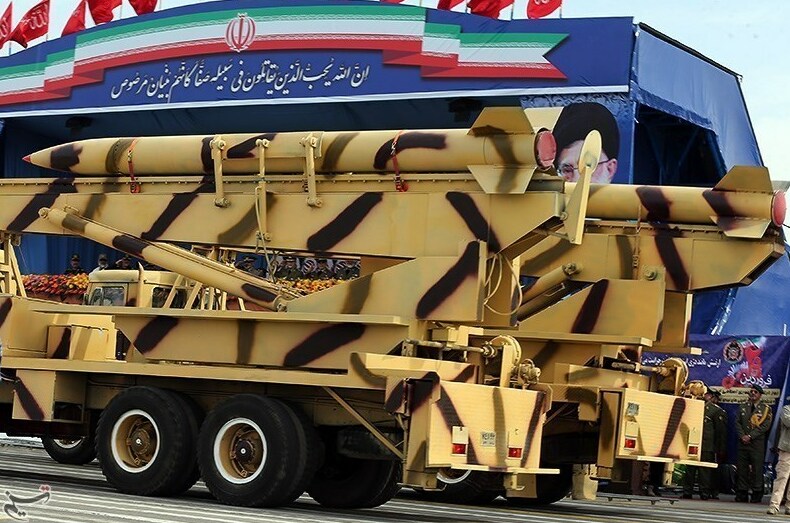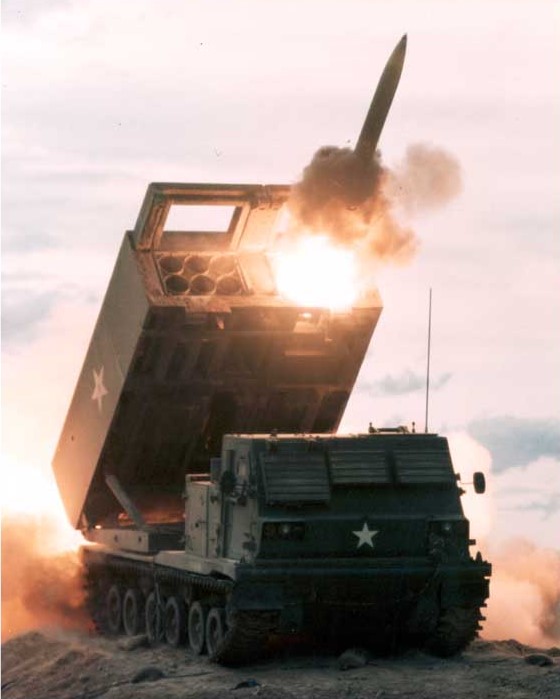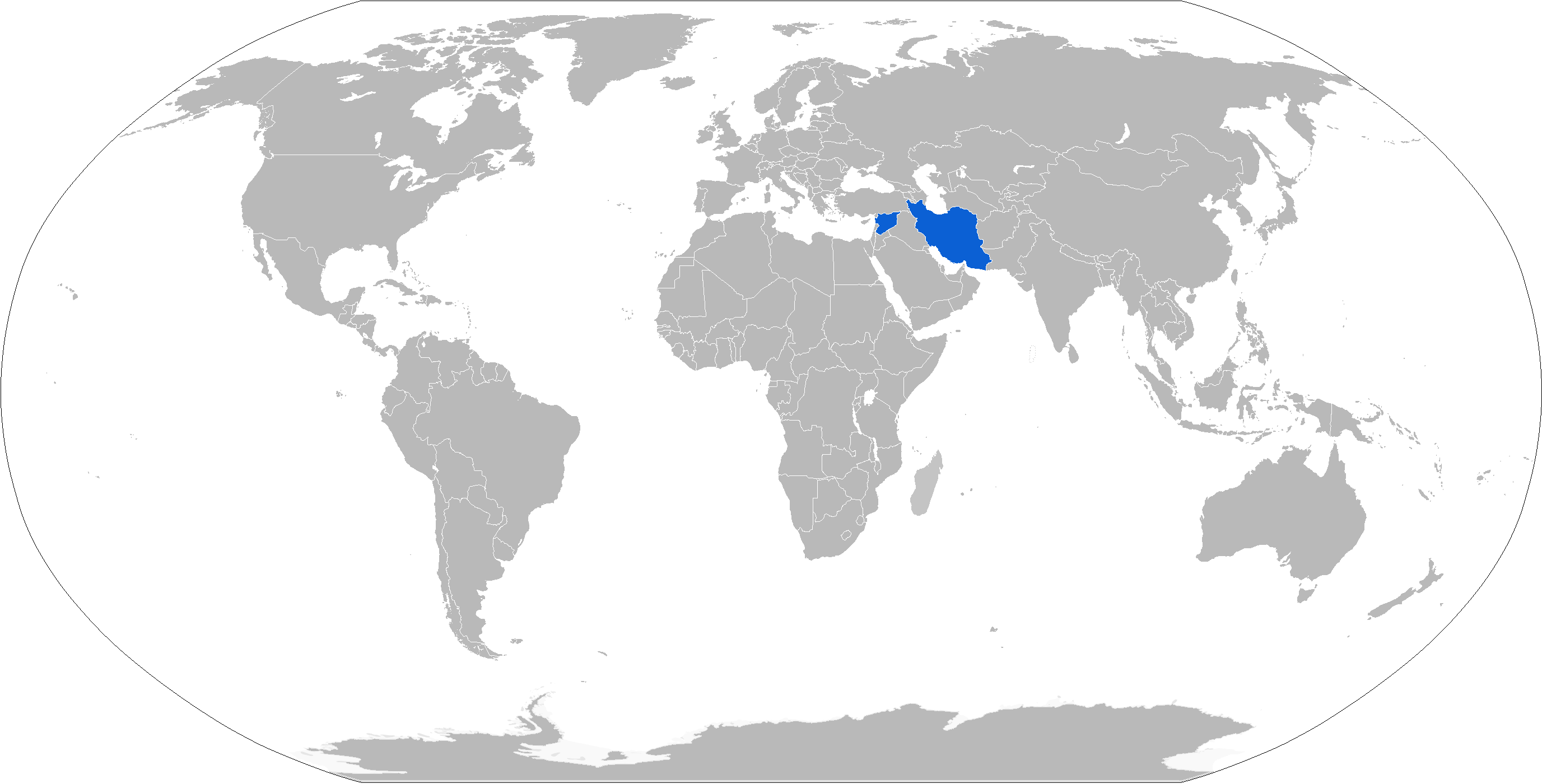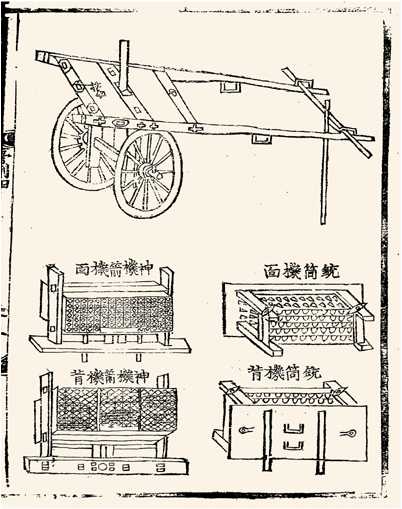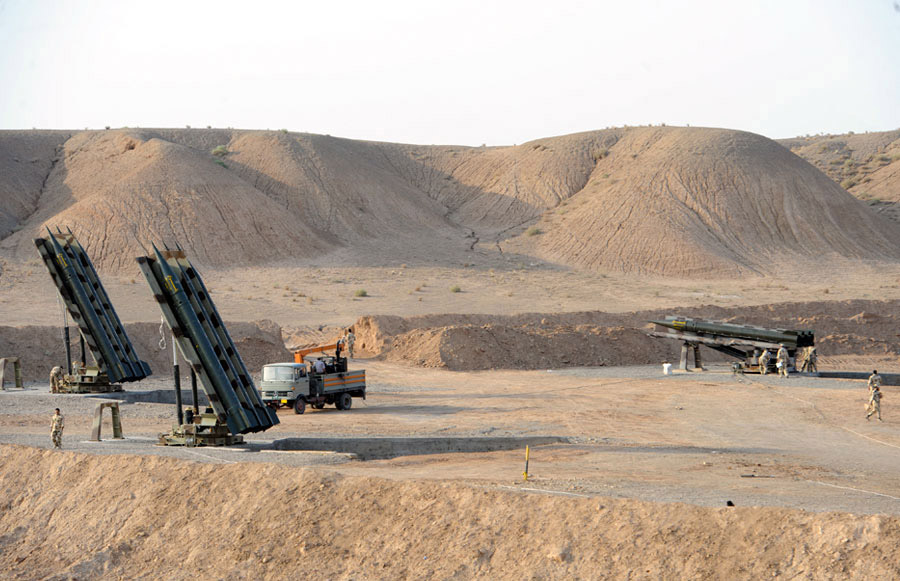|
Naze'at
The Naze'at 6-H and Naze'at 10-H/Mushak-120/Iran-130 ( fa, نازعات) are two Iranian long-range artillery rockets with ranges of about 100 km. The Naze'at 10-H is larger, more powerful, and has a longer range than the Nazeat 6-H. Like Iran's similar shaped Zelzal rockets, Naze'at rockets do not have a guidance system. Both systems are also widely known without the -H suffix, as the Naze'at 6 and Naze'at 10. The Iranians also have developed another 500 kg version called the Mushak-160 with 160 km range. History The Naze'at family was developed during the 1980s with Chinese assistance in an attempt to build an equivalent of the FROG-7 missile. Specifications ; *Max. range (km): 100 *Min. range (km): 80 *Length (mm): 6290 *Diameter (mm): 356 *Initial weight (kg): 960 *Warhead weight (kg): 130 *C.E.P (%): <5% Max. range *Average Action Time (s): 9 *Specific Impulse (s): 240 *Propellant Weight (kg): 420 *Type of Propellant: Solid ( |
Naze'at 6-H
The Naze'at 6-H and Naze'at 10-H/Mushak-120/Iran-130 ( fa, نازعات) are two Iranian long-range artillery rockets with ranges of about 100 km. The Naze'at 10-H is larger, more powerful, and has a longer range than the Nazeat 6-H. Like Iran's similar shaped Zelzal rockets, Naze'at rockets do not have a guidance system. Both systems are also widely known without the -H suffix, as the Naze'at 6 and Naze'at 10. The Iranians also have developed another 500 kg version called the Mushak-160 with 160 km range. History The Naze'at family was developed during the 1980s with Chinese assistance in an attempt to build an equivalent of the FROG-7 missile. Specifications ; *Max. range (km): 100 *Min. range (km): 80 *Length (mm): 6290 *Diameter (mm): 356 *Initial weight (kg): 960 *Warhead weight (kg): 130 *C.E.P (%): <5% Max. range *Average Action Time (s): 9 *Specific Impulse (s): 240 *Propellant Weight (kg): 420 *Type of Propellant: Solid ( |
Iran's Missile Forces
The Islamic Revolutionary Guard Corps Aerospace Force or Islamic Revolutionary Guard Corps Air and Space Force (IRGCASF; fa, نیروی هوافضای سپاه پاسداران انقلاب اسلامی, niru-ye havâfazây-e sepâh-e pâsdârân-e enghelâb-e eslâmi, officially acronymed NEHSA) is the strategic missile, air, and space force within the Islamic Revolutionary Guard Corps (IRGC) of Iran. It was renamed from the IRGC Air Force into the IRGC Aerospace Force in 2009. Aviation forces Most American public sources disagree and argue on which aircraft are operated by the AFAGIR. The Washington Institute for Near East Policy said in 2005 that " e backbone of the IRGCAF consists of ten Su-25 Frogfoot attack aircraft (including seven flown from Iraq to Iran during the 1991 Gulf War, kept airworthy with the help of Georgian technicians) and around forty EMB-312 Tucanos". The Washington Institute also said that the IRGCAF maintained thirty Y-12 and Dassault Falcon 20 li ... [...More Info...] [...Related Items...] OR: [Wikipedia] [Google] [Baidu] |
Current Equipment Of The Iranian Army
This page includes weapons used by both the Ground Forces of the Islamic Republic of Iran Army and the Ground Forces of the Islamic Revolutionary Guard Corps. From 1925 to the Iranian Revolution in 1979, Iran was primarily equipped with Western hardware and equipment. Cases exist where Iran was supplied with equipment before it was even made standard in the country that developed it (for example the US F-14 Tomcat jet, and the British Chieftain tank). Primary suppliers included the United States, Britain, France, West Germany, Italy, Israel, and the Soviet Union. The post-revolution sanctions and the Iran–Iraq War had a dramatic effect on Iran's inventory of western equipment. Under the pressures of war, supplies were quickly exhausted and replacements became difficult to come by. The war forced Iran to turn towards Syria, Brazil and China to meet its short-term military needs. Initial developments in military technology were carried out with the support of China, North Kor ... [...More Info...] [...Related Items...] OR: [Wikipedia] [Google] [Baidu] |
Artillery Rocket
Rocket artillery is artillery that uses rocket (weapon), rocket explosives as the projectile. The use of rocket artillery dates back to medieval China where devices such as fire arrows were used (albeit mostly as a Psychological warfare, psychological weapon). Fire arrows were also used in multiple launch systems and transported via carts. First true rocket artillery was developed in India by the Kingdom of Mysore. In the late nineteenth century, due to improvements in the power and range of conventional artillery, the use of early military rockets declined; they were finally used on a small scale by both sides during the American Civil War. Modern rocket artillery was first employed during World War II, in the form of the German Nebelwerfer family of rocket ordnance designs, Soviet Katyusha rocket launcher, Katyusha-series and numerous other systems employed on a smaller scale by the Western allies and Japan. In modern use, the rockets are often guided by an internal guiding syste ... [...More Info...] [...Related Items...] OR: [Wikipedia] [Google] [Baidu] |
Zelzal-2
Zelzal-2/Mushak-200 (Persian: زلزال-۲, meaning "Earthquake") is an Iranian unguided long-range artillery rocket. The Zelzal-2 is a 610 mm truck-launched rocket that has a payload of 600 kg and a range of about 200 km. Development of the Zelzal series began in 1990 and the Zelzal-2 was first shown in 1998. It is developed from the Zelzal-1 and was developed into the Zelzal-3. It has been exported to Syria, Hezbollah, and the Houthis, and has seen combat use in the Syrian Civil War and Yemeni Civil War. The missile is thought to be based on the Soviet 9K52 Luna-M missile. Operators * * * Hezbollah * Houthis See also * Aerospace Force of the Islamic Revolutionary Guard Corps * Armed Forces of the Islamic Republic of Iran * Defense industry of Iran * Equipment of the Iranian Army * Fateh-110 * Zelzal-1 * Zelzal-3 Zelzal-3 ( fa, زلزال-۳, meaning "earthquake") is an Iranian-made solid propellant guided artillery rocket with a range of 200 km. Cor ... [...More Info...] [...Related Items...] OR: [Wikipedia] [Google] [Baidu] |
Rocket Artillery
Rocket artillery is artillery that uses rocket explosives as the projectile. The use of rocket artillery dates back to medieval China where devices such as fire arrows were used (albeit mostly as a psychological weapon). Fire arrows were also used in multiple launch systems and transported via carts. First true rocket artillery was developed in India by the Kingdom of Mysore. In the late nineteenth century, due to improvements in the power and range of conventional artillery, the use of early military rockets declined; they were finally used on a small scale by both sides during the American Civil War. Modern rocket artillery was first employed during World War II, in the form of the German Nebelwerfer family of rocket ordnance designs, Soviet Katyusha-series and numerous other systems employed on a smaller scale by the Western allies and Japan. In modern use, the rockets are often guided by an internal guiding system or GPS in order to maintain accuracy. History Early history ... [...More Info...] [...Related Items...] OR: [Wikipedia] [Google] [Baidu] |
Iranian Military Industry
Iran's military industry manufactures and exports various types of arms and military equipment. Iran's military industry, under the command of Iran's Ministry of Defence and Armed Forces Logistics, is composed of the following main components: Security of Telecommunication and Information Technology (STI) is also part of the Iranian defense industry. History Iran's military industry was born under the last Shah of Iran, Mohammad Reza Pahlavi. In 1973, the Iran Electronics Industries (IEI) was founded to organize efforts to assemble and repair foreign-delivered weapons. Most of Iran's weapons before the Islamic revolution were imported from the United States and Europe. Between 1971 and 1975, the Shah went on a buying spree, ordering $8 billion in weapons from the United States alone. This alarmed the United States Congress, which strengthened a 1968 law on arms exports in 1976 and renamed it the Arms Export Control Act. Still, the United States continued to sell large amounts ... [...More Info...] [...Related Items...] OR: [Wikipedia] [Google] [Baidu] |
Zelzal-3
Zelzal-3 ( fa, زلزال-۳, meaning "earthquake") is an Iranian-made solid propellant guided artillery rocket with a range of 200 km. Cordesman, Anthony H. (2007)Lessons of the 2006 Israeli-Hezbollah War p. 11. It is an upgrade of the Zelzal-2 rocket with slightly improved range and was first shown to the public in 2007. A variant, the Zelzal-3B, has a smaller warhead and a range of 250 km. The shape and dimensions of the Zelzal-3 are nearly identical with previous versions except that the nosecone is cone shaped rather than the dome shaped Zelzal-2 and Zelzal-1. The Zelzal-3 has received little use as the much more accurate Fateh-110 missile was also developed from the Zelzal-2. A number of sources confuse the Zelzal-3 with the Shahab-3 ballistic missile. Operators * * Houthi movement, Houthis have a rocket they call the Zelzal-3, which they claim it is locally-made and not imported from Iran. See also * Zelzal-1 * Zelzal-2 * Fateh-110 * Military of Iran * Aeros ... [...More Info...] [...Related Items...] OR: [Wikipedia] [Google] [Baidu] |
Circular Error Probable
In the military science of ballistics, circular error probable (CEP) (also circular error probability or circle of equal probability) is a measure of a weapon system's precision. It is defined as the radius of a circle, centered on the mean, whose perimeter is expected to include the landing points of 50% of the rounds; said otherwise, it is the median error radius. That is, if a given munitions design has a CEP of 100 m, when 100 munitions are targeted at the same point, 50 will fall within a circle with a radius of 100 m around their average impact point. (The distance between the target point and the average impact point is referred to as bias.) There are associated concepts, such as the DRMS (distance root mean square), which is the square root of the average squared distance error, and R95, which is the radius of the circle where 95% of the values would fall in. The concept of CEP also plays a role when measuring the accuracy of a position obtained by a navigati ... [...More Info...] [...Related Items...] OR: [Wikipedia] [Google] [Baidu] |
Zelzal-1
Zelzal-1 ( fa, زلزال-۱, meaning "Earthquake-1") is an Iranian-made heavy artillery rocket with an estimated range of 160 km. at missilethreat.com It is believed to be owned by the and . The rocket received relatively little use but was the basis for the more successful artillery rocket. Users * *See also * |
Kilogram
The kilogram (also kilogramme) is the unit of mass in the International System of Units (SI), having the unit symbol kg. It is a widely used measure in science, engineering and commerce worldwide, and is often simply called a kilo colloquially. It means 'one thousand grams'. The kilogram is defined in terms of the second and the metre, both of which are based on fundamental physical constants. This allows a properly equipped metrology laboratory to calibrate a mass measurement instrument such as a Kibble balance as the primary standard to determine an exact kilogram mass. The kilogram was originally defined in 1795 as the mass of one litre of water. The current definition of a kilogram agrees with this original definition to within 30 parts per million. In 1799, the platinum ''Kilogramme des Archives'' replaced it as the standard of mass. In 1889, a cylinder of platinum-iridium, the International Prototype of the Kilogram (IPK), became the standard of the unit of mass for ... [...More Info...] [...Related Items...] OR: [Wikipedia] [Google] [Baidu] |
Transporter Erector Launcher
A transporter erector launcher (TEL) is a missile vehicle with an integrated tractor unit that can carry, elevate to firing position and launch one or more missiles. History Such vehicles exist for both surface-to-air missiles and surface-to-surface missiles. Early on, such missiles were launched from fixed sites and had to be loaded onto trucks for transport, making them more vulnerable to attack, since once they were spotted by the enemy they could not easily be relocated, and if they were it often took hours or even days to prepare them for launch once they reached their new site. Usually a number of TELs and TELARs are linked to one command post vehicle (CP or CPV). They may use target information from target acquisition, designation and guidance radar (TADAGR or TAR). Transporter erector launcher and radar A transporter erector launcher and radar (TELAR) is a type of TEL that also incorporates part or all of the radar system necessary for firing the surface-to-air missil ... [...More Info...] [...Related Items...] OR: [Wikipedia] [Google] [Baidu] |
